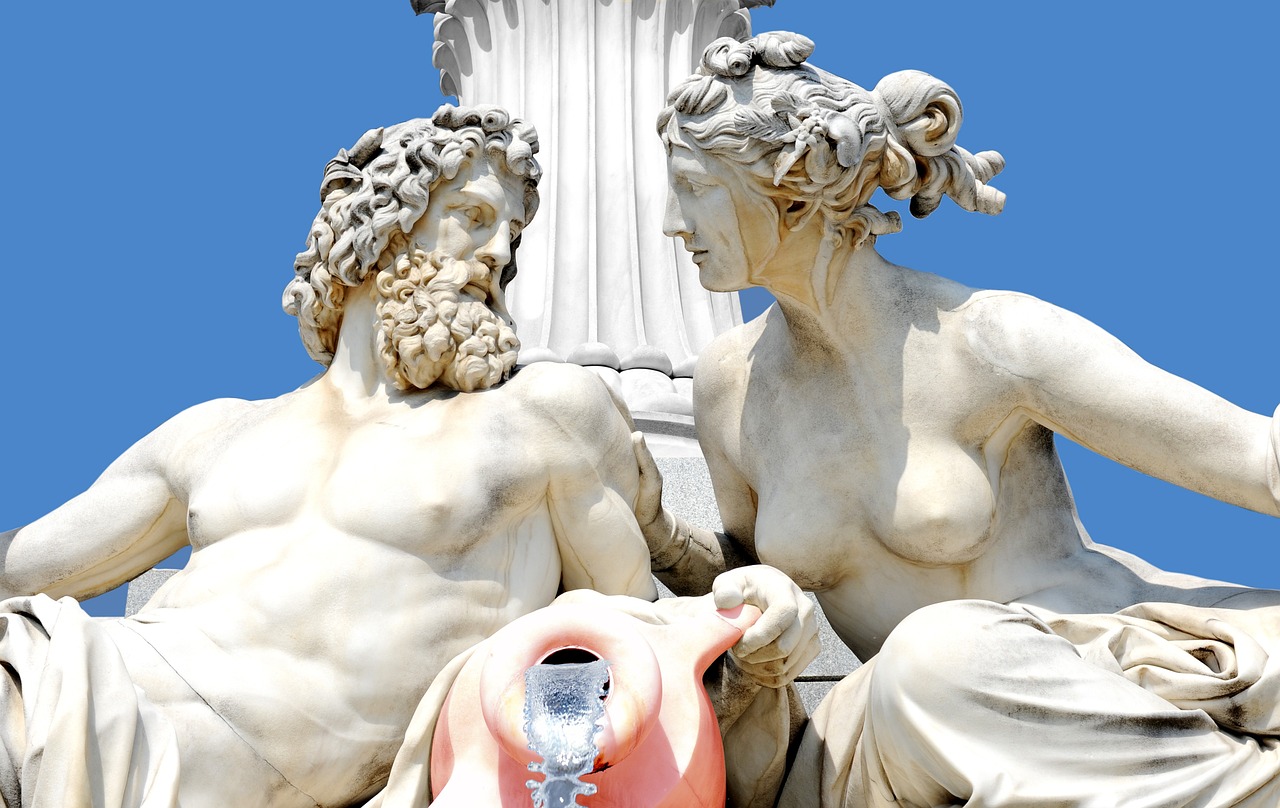Hermes: The Messenger of the Gods
Hermes, a pivotal figure in Greek mythology, embodies a wide array of symbolic roles. As the Olympian deity of herds and flocks, travelers and hospitality, trade and cunning, he is often recognized as a protector of roads and an advocate for traders. Portrayed as the herald of Zeus, the King of the Gods, Hermes also guided departed souls to the underworld, enhancing his multifaceted identity.
Visually, Hermes is depicted in various forms, often as a youthful, athletic figure without facial hair, or as an older man with a beard. Key features include winged sandals, a traveling hat, and a herald’s wand.
Myths of Hermes
From infancy, Hermes demonstrated his cleverness and mischievous nature. Notably, he cunningly stole cattle from Apollo and ingeniously fashioned the lyre from a tortoise shell, an act that amused Zeus so greatly that he welcomed Hermes into the council of the twelve Olympians. Further stories highlight his swift actions, such as turning the herdsman Battos into stone for revealing his theft.
Later, Hermes received tasks from Zeus, including defeating the hundred-eyed giant Argos, who was tasked with guarding Io. He played an essential role in assisting heroes, like providing Perseus with vital tools to defeat Medusa and offering Odysseus protection against Circe’s magic.
Symbols and Attributes
The most recognizable attribute of Hermes is his herald’s wand, known in Greek as the kerykeion or the Latin caduceus, often depicted alongside various military instruments. He typically adorns a knee-length robe, a short cloak, and, uniquely, winged boots and hats, signifying both travel and swiftness.
Another important symbol of Hermes is the herma, a stone marker often acting as a small shrine. Early examples of hermae were simply upright stones, while later versions resembled rectangular statues featuring Hermes’s head and a representation of his staff.
Sacred Animals and Plants
Sacred to Hermes are the ram and hare, and he is frequently seen riding a large ram in ancient artwork. The god’s connection to livestock extends to cattle, sheep, and goats, symbolizing his guardianship over herds. His sacred vegetation includes the crocus flower and the strawberry tree, which are elements often associated with his character in artistic representations.
Family Heritage
Parents: Hermes is the offspring of Zeus and Maia, a daughter of Atlas and part of a lineage that includes significant Titans like Kronos and Rheia. This divine ancestry places Hermes as one of the younger Olympian gods, with siblings that include Apollo, Artemis, Athena, Ares, and Dionysus. His offspring include Pan, the goat-legged deity, among numerous mortals.
Cultural Significance and Worship
Hermes is steeped in rich traditions and cultural practices, hailed in various hymns and artworks throughout ancient literature. His presence permeates ancient texts, suggesting his importance in facilitating communication, commerce, and athletic disciplines. Hermes was venerated widely, with significant temples in Arcadia, his birthplace, where his worship expanded throughout Greece.
The festivals in Hermes’s honor, known as Hermaia, symbolized his celebration, while vast numbers of statues dotted the Greek landscape, especially in communal spaces and along roads, emphasizing both his protective and facilitative roles.
As the deity of commerce, Hermes was intricately tied to wealth, luck, and the general prosperity derived from trade, encouraging the flourishing of economic and social exchanges among communities.
In conclusion, Hermes represents much more than a simple messenger; he embodies the essential qualities of eloquence, adventure, and protection, establishing his place as a vital figure in Greek mythology. Through his clever exploits and roles, Hermes continues to resonate through history as a symbol of communication, trade, and guidance.



